For centuries, the vampire has captivated the human imagination, evoking images of immortal creatures of the night, thirsting for blood and power. But beyond the realm of folklore and fiction, there exists a vibrant and diverse community of individuals who identify with the vampire archetype in a very real and personal way.
In this article, we’ll delve into the hidden world of the vampiric lifestyle, exploring its history, beliefs, and practices. From psychic vampirism to sanguine rituals, from gothic aesthetics to modern subcultures, we’ll uncover the many facets of vampire identity and community, as well as taking a look at the positive and negative ways that vampirism has been practiced, and how to deal with a vampiric attack.
So, stick around and join me in this adventure into the world of the Vampire.
Cultural History
Many consider the origin of Vampirism to find its roots in Victorian literature, being a pure fantasy of the mind and an obsession with the macabre, but we find its roots much, much earlier in Ancient Mesopotamia.
Mesopotamia
In Mesopotamian mythology, which encompasses the civilizations of Sumer, Akkad, Assyria, and Babylonia, there are references to malevolent spirits known as “Lilitu” or “Lilith” and “Akhkharu.” These entities were often depicted as demons or spirits associated with darkness, chaos, and the underworld. You may remember me speaking about the lilu and the lili which were considered wind demons and associated with Pazuzu but what I also believe evolved into the figure we know and love as Lilith.

Particularly a prominent figure in Mesopotamian folklore. Lilith was believed to be a night demon associated with storms and wind, often depicted as a winged creature with bird-like features, although we should be careful to not get this imagery mixed up with that of Ishtar. According to some legends, Lilith was said to prey on newborn infants and pregnant women, embodying the archetype of the femme fatale and representing fears surrounding childbirth and maternal mortality.
Greece
In ancient Greek mythology, there are several references to creatures that share similarities with vampires. One notable example is the Lamia, a female monster depicted as a half-woman, half-serpent figure who was said to devour children and seduce men to their doom. Lamia was often associated with the concept of female sexuality and the dangers of lust and temptation.
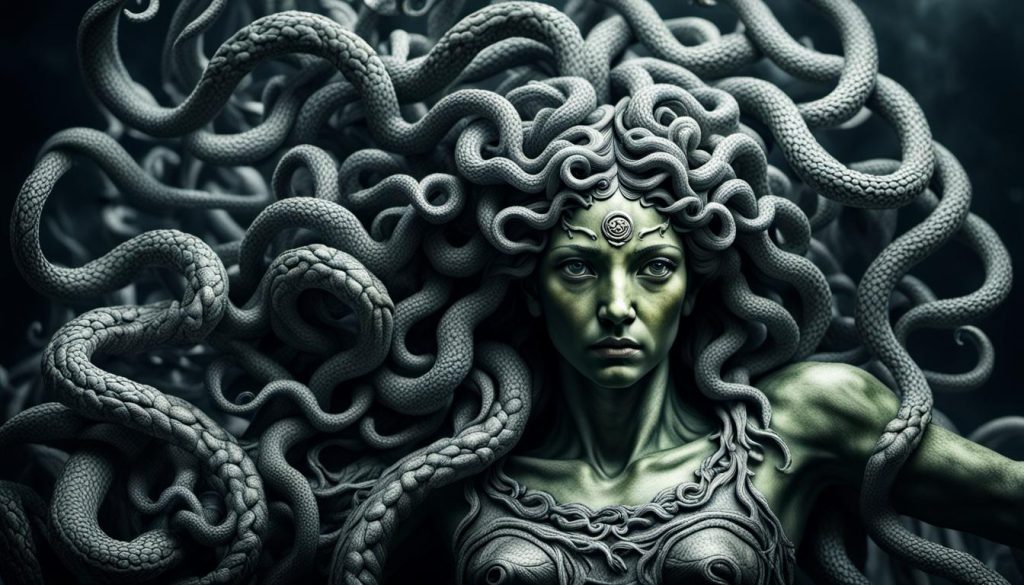
Another figure from Greek folklore is the Empusa, a demonic creature with the ability to shape-shift and assume various forms, including that of a beautiful woman. Empusae were believed to prey on travellers and wayfarers, luring them into secluded places before revealing their true monstrous nature and feasting on their blood or flesh.
Egypt

In ancient Egyptian mythology, the concept of vampirism is closely linked to beliefs surrounding death, the afterlife, and the journey of the soul. While Egypt does not have a direct equivalent to the modern vampire, there are references to beings such as the “Akh” or “Ba,” which are aspects of the soul that were believed to persist after death.
The Egyptian Book of the Dead, a funerary text that guides the deceased through the afterlife, contains spells and incantations intended to protect the soul from malevolent spirits and demons that might threaten its passage. These spirits, often depicted as grotesque or monstrous beings, embody the dangers and challenges faced by the soul on its journey to the realm of the dead.
European Folklore
The origins of the modern vampire as we know it today can be traced back to European folklore, where tales of the undead have permeated cultures for centuries. Particularly in Eastern Europe, regions such as Romania, Hungary, and Serbia were steeped in beliefs in revenants—corpses that defied death to return to the realm of the living, often with malevolent intentions.
In these communities, the fear of revenants was deeply ingrained, as they were believed to be responsible for a host of calamities, including plagues, crop failures, and mysterious deaths. Revenants were thought to rise from their graves at night, seeking to drain the life force of the living or spread disease and chaos in their wake. Villagers took elaborate precautions to protect themselves from these undead creatures, including placing garlic or holy symbols around their homes and driving stakes through the hearts of suspected vampires.
The Slavic Influence

Slavic folklore exerted a profound influence on the development of the vampire mythos, particularly in countries like Russia and Poland, where stories of vampiric creatures were woven into the fabric of daily life. In these cultures, beings known as “upirs” or “strigoi” were believed to possess similar traits to vampires, including the ability to rise from the dead and feed on the blood of the living.
These beliefs were often intertwined with pagan rituals and superstitions, reflecting the blending of ancient traditions with Christian influences. In Slavic folklore, vampires were not merely monsters to be feared but also symbols of the uncanny and the unknown, representing the liminal space between life and death.
Rituals and practices aimed at warding off vampires were common in Slavic communities, ranging from the placement of garlic and crucifixes to the use of protective amulets and charms. These traditions persisted for centuries, shaping the cultural landscape of the region.
Literary History
The thing that probably laid the cornerstone to a majority of people following a modern lifestyle, is the various literature that come out of the distant past to the modern inclusions with revivals of the theme cropping up every now and then. I will have a look at some of the main literary influences, but probably the earliest mention of a vampire in literature was just after the so-called “vampire craze” of 1720s and 1730s. A German poet named Heinrich August Ossenfelder wrote a poem called The Vampire in 1748.
Of course, all of this literature focused on an erotic theme, even Ossenfelder’s poem was about a man who’s love was thwarted by a fair maiden and so he threatens to visit her in the night and drink her blood by giving her the seductive kiss of the vampire.
However, in more well-known literary circles we find the novella by John Polidori, “The Vampyre”, written in 1819, often credited as the first modern vampire story in English literature. John Polidori, a physician and writer, was inspired by a fragment of a story written by Lord Byron. The novella tells the story of Lord Ruthven, a charismatic and enigmatic nobleman who hides a dark secret—he is a vampire. Polidori’s depiction of the vampire as a seductive and aristocratic figure sets the stage for many of the tropes and themes that would become synonymous with the genre.
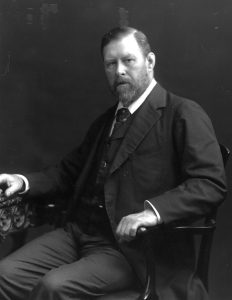
Then came Bram Stoker’s “Dracula” (1897), arguably the most influential vampire novel of all time. Stoker introduced the world to Count Dracula, a Transylvanian nobleman who terrorizes Victorian England with his insatiable thirst for blood. Drawing on Eastern European folklore and Gothic literary traditions, “Dracula” combined elements of horror, romance, and mystery to create a timeless masterpiece. Stoker’s portrayal of Dracula as a cunning and charismatic villain, capable of exerting control over his victims through supernatural means, cemented the vampire’s status as a symbol of fear and desire.
However, moving back in time again, just over 20 years before Bram Stoker’s “Dracula”, was “Carmilla” by Sheridan Le Fanu, published in 1872. “Carmilla” follows the story of a young woman named Laura who becomes the prey of a female vampire named Carmilla. Le Fanu’s exploration of themes such as forbidden desire, sexuality, and the supernatural influenced later vampire fiction and contributed to the evolution of the genre.
Anne Rice’s “Interview with the Vampire” (1976) marked a departure from traditional vampire narratives, offering a more introspective and psychological exploration of the vampire experience. The novel, which is presented as a series of interviews with the vampire Louis, delves into themes of immortality, morality, and existential angst. Rice’s vampires are complex and tragic figures, grappling with their own humanity as they navigate a world that fears and misunderstands them.
And finally, we come to the sparkly. While perhaps less critically acclaimed than some of the other works mentioned, Stephenie Meyer’s “Twilight” series (2005-2008) played a significant role in popularizing vampires among a new generation of readers. Centred around the romance between Bella Swan and the vampire, Edward Cullen, the series introduced a new interpretation of vampires as glittering, angst-ridden teenagers. Despite its detractors, “Twilight” brought vampires back into the spotlight and sparked a renewed interest in vampire fiction and fandom.
These works, among others, have shaped the literary landscape of vampire fiction, inspiring countless authors and filmmakers to explore the enduring appeal of the undead. But we need to get to the modern and real-life applications of Vampirism. Before we do that though, I wanted to move from the fictional literature to the non-fiction and speak about some authors that you might want to check out.
Prominent Authors and their works
Dion Fortune
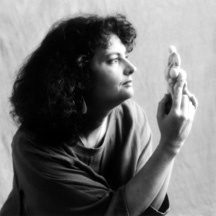
Dion Fortune, a British occultist, author, and founder of the Fraternity of the Inner Light, explored the concept of vampirism within the context of her esoteric teachings and writings. While Fortune did not focus extensively on vampirism specifically, she touched upon the topic in some of her works, offering insights into the symbolic and psychological aspects of psychic vampirism.
In “The Secrets of Dr. Taverner” (1926) she depicted characters who exhibit vampiric tendencies, feeding upon the psychic energies of others in order to sustain themselves or fulfill their desires, explored the theme of psychic vampirism as a form of energy drain within the human psyche and spiritual realm. Fortune viewed psychic vampirism as a metaphor for the draining of spiritual vitality and life force by negative influences or malevolent entities.
In her teachings on psychic self-defense and spiritual hygiene, which she explored greatly in her book “Psychic Self-Defense” (1930), Fortune emphasized the importance of protecting oneself against psychic vampirism and other forms of energetic intrusion. She advocated for practices such as visualization, meditation, and the use of protective symbols and rituals to shield oneself from psychic attack and manipulation. Fortune believed that maintaining strong energetic boundaries and cultivating inner strength were essential for safeguarding one’s spiritual well-being. This book is one of those I usually recommend for protective magic.
Manly P. Hall
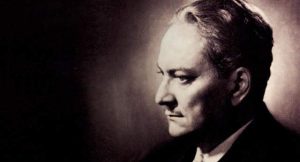
Next in line is Manly P. Hall, a prolific author and lecturer on esoteric and occult topics, explored the symbolism of vampirism within the broader context of ancient mystery traditions and symbolic interpretation. In his book “The Secret Teachings of All Ages,” Hall delves into various allegorical meanings associated with the vampire archetype.
Like Fortune, Hall does not focus extensively on vampirism specifically, he touches upon the symbolism of the vampire in the context of the human psyche and spiritual evolution.
Hall’s writings suggest that the vampire archetype symbolizes the predatory instincts and darker aspects of human nature. Like the vampire in literature, which preys upon the life force of others to sustain itself, humans have within them primal urges and desires that can lead to destructive behaviour if left unchecked. The vampire serves as a metaphor for these instincts, highlighting the importance of self-awareness and self-mastery in spiritual development.
In “The Secret Teachings of All Ages,” Hall explores the theme of spiritual dangers and temptations that confront the seeker on the path to enlightenment. He suggests that the allure of power, pleasure, and material wealth can be likened to the seductive appeal of the vampire, which entices its victims with promises of immortality and eternal youth. Hall warns against succumbing to these temptations, advocating instead for the pursuit of inner wisdom and spiritual truth.
While the vampire is often portrayed as a sinister and malevolent figure, Hall also hints at the potential for transformation and renewal within the vampire archetype. He suggests that the vampire’s thirst for blood and vitality can be interpreted symbolically as a quest for spiritual nourishment and enlightenment. By confronting and embracing the shadow aspects of the self, individuals can undergo a process of inner alchemy and rebirth, transcending their limitations and attaining higher states of consciousness.
Overall, Manly P. Hall’s insights into the symbolism of vampirism offer a thought-provoking exploration of the human psyche and spiritual journey. By examining the vampire archetype through the lens of ancient wisdom and esoteric philosophy, Hall invites readers to contemplate the deeper meanings and universal truths embedded within this enduring mythological motif.
Don Webb

Moving from the symbolism of the vampire archetype, we now move a little closer to the real-life vampire. Within this realm you will find many connections to the Temple of Set, starting with Don Webb.
Don Webb is American author and occultist, as well as a former High Priest of the Temple of Set. He has written several books and essays on occult topics, including vampirism. Here are some of his notable works related to vampirism:
1. “Uncle Setnakt’s Essential Guide to the Left Hand Path” (2003):
While not solely focused on vampirism, this book explores various aspects of the Left Hand Path, including the symbolism of vampirism within the context of esotericism and occult philosophy. Webb delves into the concept of psychic vampirism and its significance as a symbol of personal empowerment and spiritual evolution.
2. “Energy Magick of the Vampire” (2003):
In this book, Webb explores the theory and practice of energy magick from a vampiric perspective. He delves into techniques for working with subtle energies, psychic feeding, and spiritual transformation, drawing upon the symbolism of the vampire archetype to guide practitioners on a path of personal empowerment and self-mastery.
3. “The Seven Faces of Darkness” (2009):
While not exclusively focused on vampirism, this book explores the symbolism of darkness and the shadow self within the context of esotericism and the Left Hand Path. Webb delves into the psychological and spiritual aspects of the vampire archetype, examining its significance as a symbol of personal transformation and inner alchemy.
4. “Set the Magician” (2010):
In this book, Webb explores the mythology and symbolism of the Egyptian deity Set within the context of modern occultism. While not specifically about vampirism, Set has been associated with themes of darkness, chaos, and personal power, which are often explored within the vampire subculture. Webb’s examination of Set’s role as a deity of individualism and rebellion may resonate with individuals interested in vampiric symbolism.
Webb’s interpretation of vampirism goes beyond the literal consumption of blood and delves into the symbolic and psychological aspects of the vampire archetype. He views vampirism as a metaphor for the quest for power, knowledge, and self-mastery, drawing parallels between the vampire’s thirst for blood and the individual’s drive to attain personal empowerment and transcendence.
Like other occultists and esoteric practitioners, Webb acknowledges the concept of energy exchange within the vampire archetype. He suggests that vampiric symbolism can be interpreted as representing the manipulation and transmutation of subtle energies for personal gain or spiritual advancement.
Central to Webb’s interpretation of vampirism is the concept of self-deification—the process of recognizing and actualizing one’s own divinity or godhood. He views the vampire as a symbol of the individual’s quest to transcend human limitations and become a sovereign being capable of shaping their own destiny.
Despite the emphasis on personal power and autonomy, Webb also stresses the importance of ethical conduct and responsibility within the practice of vampirism. He advocates for the use of power for constructive purposes and encourages individuals to consider the consequences of their actions on themselves and others.
If you have an interest in the philosophies of the Temple of Set, then I would also suggest exploring the works of Michael A. Aquino, an American occultist and the founder of the Temple of Set. While he did not focus exclusively on vampirism in his writings, he explored related themes within the context of his esoteric teachings and philosophical framework.
Michelle Belanger

Michelle Belanger is a prominent figure in the modern vampire community and has written extensively on the topic of vampirism. Belanger is an author, occultist, and self-identified psychic vampire who has contributed to the understanding and discussion of vampirism within both the vampire subculture and broader occult community.
Belanger’s writings on vampirism cover a wide range of topics, including personal experiences, metaphysical theories, ethical considerations, and practical techniques for energy work.
In “The Psychic Vampire Codex” (2004), Belanger provides an in-depth exploration of psychic vampirism, drawing upon her own experiences as a psychic vampire and insights from the vampire community. The book offers guidance on understanding psychic vampirism, developing energy awareness and management skills, and navigating ethical considerations within the vampire subculture.
Building upon the concepts introduced in “The Psychic Vampire Codex,” Belanger’s follow-up book, “The Psychic Energy Codex” (2007), delves deeper into the principles of energy work and psychic self-defense. She explores various techniques for manipulating energy, protecting oneself from psychic attack, and enhancing personal energy reserves.
We also have “Vampires in Their Own Words: An Anthology of Vampire Voices” (2007). As editor of this anthology, Belanger presents a collection of essays and personal accounts from individuals within the vampire community, offering diverse perspectives on vampirism, identity, and spirituality. The book provides readers with a glimpse into the lived experiences and beliefs of those who identify as vampires.
In addition to her books, Belanger has contributed articles and essays to various publications and online forums, sharing her insights and perspectives on vampirism with a wider audience. She has played a significant role in shaping the modern understanding of vampirism and fostering a sense of community and understanding within the vampire subculture.
Michelle Belanger’s interpretation of vampirism encompasses both the practical aspects of energy work and the spiritual and psychological dimensions of the vampire archetype. She draws upon her own experiences and insights to explore the nature of vampirism and its significance within the broader occult and metaphysical context.
She views vampirism as a form of psychic energy exchange, where individuals have a heightened sensitivity to subtle energy fields and may experience a need to absorb or replenish energy from external sources. She describes psychic vampires as individuals who have a natural affinity for working with energy and may unconsciously or consciously draw upon the energy of others for sustenance or empowerment.
Central to Belanger’s interpretation of vampirism is the importance of energy awareness and management. She emphasizes the need for psychic vampires to develop skills for recognizing, balancing, and regulating their own energy levels, as well as respecting the energetic boundaries of others. Belanger advocates for practices such as meditation, visualization, and energy work to enhance energy awareness and promote energetic hygiene.
She emphasizes the importance of community and support within the vampire subculture. She advocates for open communication, mutual respect, and ethical conduct among members of the vampire community, fostering a sense of solidarity and understanding among individuals who share similar experiences and beliefs.
Father Sebastiaan
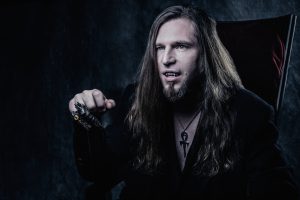
And finally, Father Sebastiaan, born Joseph Labrecque, is a prominent figure within the modern vampire subculture. Born on December 18, 1972, in New York City, Father Sebastiaan has dedicated much of his life to exploring the vampire archetype and fostering a sense of community among those who identify with it.
With a background in fashion, performance art, and occult studies, not to mention once being a dentist’s assistant which led him to start a business as a fangsmith, Father Sebastiaan became a leading figure in the vampire community.
In 1998, Father Sebastiaan founded the Sabretooth Clan, an international organization dedicated to celebrating and exploring the vampire lifestyle. The Sabretooth Clan hosts events, gatherings, and rituals that embrace vampiric symbolism and provide a space for individuals to connect with others who share their interests and experiences.
One of Father Sebastiaan’s most notable contributions to the vampire community is the creation of the Endless Night Vampire Ball, an annual event that brings together vampires and enthusiasts from around the world for a night of music, performance, and revelry. The Endless Night Vampire Ball has become a hallmark of the vampire subculture, attracting attendees from all walks of life who come together to celebrate their shared passion for the mysterious and macabre.
In addition to his work with the Sabretooth Clan and the Endless Night Vampire Ball, Father Sebastiaan is also an author, lecturer, and spiritual leader within the vampire community. He has written several books on vampirism, spirituality, and esoteric topics, sharing his knowledge and insights with others who are drawn to the vampire archetype.
Overall, Father Sebastiaan’s contributions to the modern vampire subculture have helped to foster a sense of community, acceptance, and understanding among those who identify with the vampire lifestyle. Through his work, he continues to inspire and empower individuals to embrace their unique identities and explore the mysteries of the night.
A couple of his noteworthy books are Vampyre Magick and Vampyre Sanguinomicon.
“Vampyre Magick: The Grimoire of the Living Vampire” is a comprehensive guide to the practice of vampiric magick within the context of the modern vampire subculture. Drawing upon his years of experience as a leader and practitioner within the vampire community, Father Sebastiaan offers readers a glimpse into the esoteric world of vampyre magick, blending elements of occultism, energy work, and spiritual exploration.
The book begins by exploring the history and mythology of vampirism, tracing its origins from ancient folklore to its modern manifestations within the vampire subculture. Father Sebastiaan delves into the symbolism of the vampire archetype, exploring its significance as a symbol of personal transformation, power, and transcendence.
From there, “Vampyre Magick” dives into the practical aspects of vampiric magick, offering readers a step-by-step guide to harnessing the energies of the night for spiritual empowerment and self-discovery. Father Sebastiaan covers a wide range of topics, including energy work techniques, ritual practices, Vampiric Lycanthropy, sex magick, and meditation exercises designed to awaken the vampyric within and tap into the hidden potentials of the subconscious mind.
Throughout the book, Father Sebastiaan emphasizes the importance of ethical conduct, self-awareness, and personal responsibility in the practice of vampyre magick. He encourages readers to approach their journey with curiosity, respect, and a willingness to explore the depths of their own psyche.
In essence, “Vampyre Magick” serves as a guidebook for those who are drawn to the allure of the night and seek to harness its transformative powers for personal growth and spiritual evolution. With its blend of practical wisdom, esoteric knowledge, and spiritual insight, the book invites readers to embark on a journey of self-discovery and empowerment, guided by the wisdom of the vampyre.
The other book I mentioned, “Vampyre Sanguinomicon: The Lexicon of the Living Vampire” is a guide to the sanguine aspects within modern vampirism. In this work, Father Sebastiaan delves into the rich tapestry of sanguine vampirism, offering readers a detailed exploration of its history, practices, and symbolism.
The book explores the folklore and mythology surrounding the sanguine vampire as well as its modern manifestations. Father Sebastiaan then examines the cultural and psychological significance of blood, and its role as a symbol of life, vitality, and power throughout human history.
From there, “Vampyre Sanguinomicon” delves into the practical aspects of sanguine vampirism, offering readers a comprehensive guide to bloodletting rituals, donor dynamics, and ethical considerations. Father Sebastiaan covers a wide range of topics, including the physiology of blood, safety protocols for bloodletting, and the spiritual significance of blood exchange within the vampire community.
“Vampyre Sanguinomicon” also features contributions from other members of the vampire community, offering diverse perspectives and insights into the practice of sanguine vampirism. From personal anecdotes to practical tips on bloodletting techniques, the book provides readers with a wealth of knowledge and resources for exploring the sanguine aspects of the vampyric path.
A list of his other books would include:
- The Vampyre Almanac 2000 & 2012
- Vampyre Virtues: The Red Veils
- Vampyre Virtues; The Purple Veils
- Mysteries of Paris; Darkside of the City of Lights
- Black Veils; The Vampire Lexicon
- Black Veils; Master Vampyre Edition
- Black Veils; Vampyre Tarot
- In the Words of the Father, Memoirs of the Vampyre Sebastiaan Part 1 the 1990s
Modern Lifestyle
Now that we have had a look at some history and explored some prominent authors, let’s bring ourselves up to date with the modern vampiric lifestyle. Often referred to simply as the vampire lifestyle or vampirism, it is a subculture and community comprised of individuals who identify with the vampire archetype and incorporate elements of vampiric symbolism into their daily lives. While the lifestyle varies from person to person, there are some common themes and practices that unite members of the community:
Identity and Beliefs
At the core of the vampire lifestyle is a sense of identity and belonging. Many individuals within the community view vampirism as a symbolic or metaphorical identity rather than a literal one. They may resonate with aspects of the vampire mythos, such as immortality, heightened senses, and a connection to the supernatural, as a way of expressing their own personal beliefs and experiences.
Energy Work and Psychic Feeding
A central aspect of the vampire lifestyle is the belief in energy exchange and psychic feeding. Some individuals identify as psychic vampires, who claim to have a need to absorb energy from others in order to maintain their own vitality. This energy can be obtained through various means, such as meditation, ritual, or interpersonal interaction. Psychic vampires, or PsyVamps, often emphasize the importance of consent and ethics in their feeding practices, striving to maintain a balanced and respectful exchange of energy with others.
Community and Culture
The vampire community provides a supportive and inclusive space for individuals to connect with others who share similar beliefs and interests. Online forums, social media groups, and local meet-ups allow members to discuss topics related to vampirism, share experiences, and forge meaningful connections with like-minded individuals. Community events, such as gatherings, rituals, and parties, provide opportunities for camaraderie and celebration within the vampire subculture.

Fashion and Aesthetics
The vampire lifestyle is often characterized by a distinct sense of style and aesthetics influenced by Gothic, Victorian, and alternative subcultures. Many members of the community embrace dark and dramatic fashion choices, incorporating elements such as corsets, velvet, lace, and leather into their wardrobes. Jewelry adorned with symbols like bats, fangs, and occult imagery is also popular among vampires as a way of expressing their identity and allegiance to the subculture.
Rituals and Practices
Rituals and practices play an important role in the vampire lifestyle, serving as a means of connecting with the supernatural and exploring spiritual beliefs. These rituals may include ceremonies for energy work, protection, cleansing, and empowerment, often drawing inspiration from a variety of cultural and religious traditions. Some vampires also incorporate elements of occultism, witchcraft, or paganism into their practices, seeking to deepen their connection to the mystical and the divine.
Overall, the modern vampiric lifestyle is a diverse and multifaceted subculture that encompasses a wide range of beliefs, practices, and experiences. While it may be misunderstood or misrepresented by mainstream society, for many individuals, vampirism is a deeply meaningful and empowering way of life that provides a sense of identity, community, and spiritual fulfilment.
Within the vampire subculture, individuals who identify with vampiric traits or practices often categorize themselves into various types or subgroups based on their beliefs, experiences, and lifestyle choices. While the classification of vampire life stylers can vary, here are some common types often encountered within the community:
Psychic Vampires
Psychic vampires are individuals who have a need to absorb energy from external sources to sustain their own vitality. They may identify with traits such as heightened sensitivity to energy, fatigue in crowded environments, and a sense of rejuvenation after energy exchange. Psychic vampires often engage in energy work practices such as meditation, visualization, and psychic feeding to maintain their energy levels.
Sanguine Vampires
Sanguine vampires, also known as blood vampires or sanguinarians, tend to have a physiological or spiritual need to consume small amounts of blood for sustenance or spiritual purposes. They may engage in consensual bloodletting rituals with willing donors as a means of obtaining the blood they require. Sanguine vampires often emphasize the importance of ethical conduct, safety, and hygiene in their bloodletting practices.
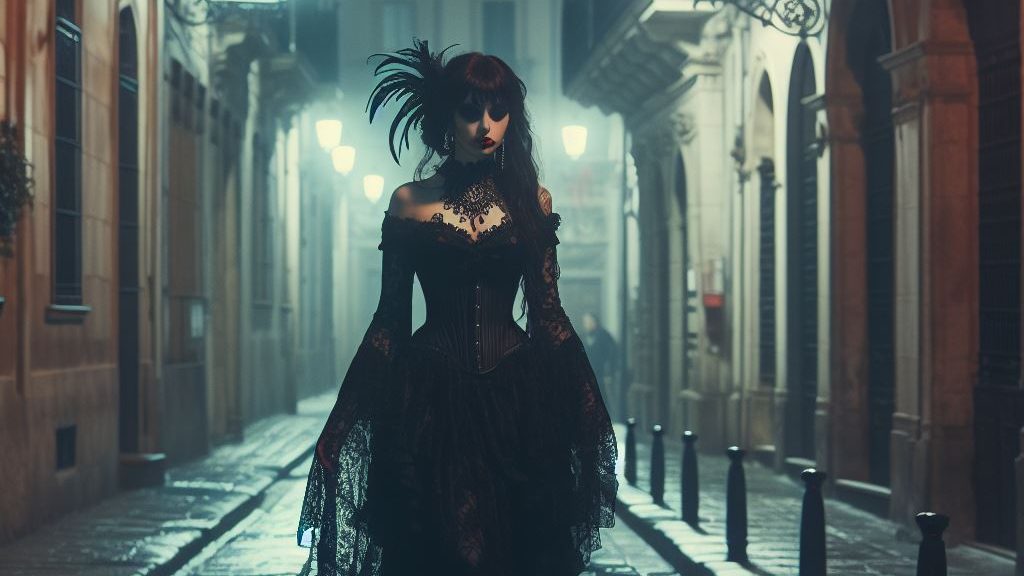
Hybrid Vampires
Hybrid vampires, as the name suggests, incorporate elements of both psychic vampirism and sanguine vampirism into their identity and practices. They may engage in both energy work and bloodletting rituals to meet their energetic and physiological needs, drawing upon a combination of psychic and physical nourishment.
Lifestyle Vampires
Lifestyle vampires are individuals who adopt elements of vampire aesthetics, symbolism, and culture into their everyday lives as a form of self-expression or identity exploration. They may incorporate vampire-inspired fashion, literature, art, and music into their lifestyle, often embracing themes of darkness, mystique, and empowerment associated with the vampire archetype.
Role-Playing Vampires
Role-playing vampires are individuals who engage in vampire-themed role-playing games, fantasies, or subcultures for recreational or creative purposes. They may participate in vampire-themed events, communities, or online forums where they adopt vampire personas, explore fictional narratives, and engage in collaborative storytelling.
Therapeutic Vampires
Therapeutic vampires are individuals who use vampire symbolism, imagery, or practices as a form of self-therapy or personal growth. They may identify with vampiric traits or experiences as a means of coping with psychological challenges, exploring their shadow self, or reclaiming personal power and agency.
Philosophical Vampires
Philosophical vampires are individuals who approach vampirism from a philosophical or spiritual perspective, exploring the symbolic, psychological, and metaphysical dimensions of the vampire archetype. They may incorporate vampiric symbolism into their philosophical or spiritual beliefs, viewing it as a metaphor for personal transformation, empowerment, or enlightenment.
These are just a few examples of the different types of vampire life stylers found within the vampire subculture. It’s important to note that individuals within the vampire community may identify with multiple types or none at all, and the boundaries between these categories can be fluid and subjective. Ultimately, vampire life stylers are a diverse and multifaceted group united by their shared interest in vampiric symbolism, practices, and culture.
The two main subgroups that we are most concerned with here, are the psychic and the sanguine vampire. As you can probably tell, there is a large emphasis on community and ethics within the practices. A sanguinarian will only feed from donors that they have made an agreement with, and they will never harm those donors, they are usually loved ones.
All of the psychic vampires I have known who practice ethically, will either have agreements in place with people to take small amounts of energy from them. These are usually people who tend to buzz with excess energy, and a small draining of that energy can actually be healthy for them. In fact there is the practice of Vampiric Healing, which delves into the area of removing energy blockages in a person’s subtle bodies and energy system.
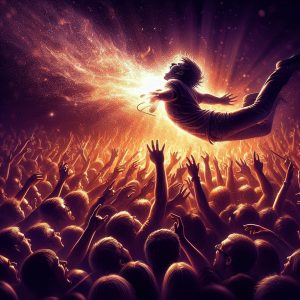
More usually, a PsyVamp will sweep excess energy from a crowd of people. This can be in the form of astrally flying over their town or city each night and scooping up the energy that is left over after everyone has dealt with their day and they are now winding down. This is energy they no longer need and have discarded. Or it may be going to concerts and scooping the excess energy that is generated from the frenzy of the crowd. This is usually energy that is not needed and will disappear over a short time, so it is considered perfectly ethical.
What is not ethical is when someone purposefully targets individuals just to drain them of energy, especially they are doing this on a constant basis and not allowing the person to recover, knowing that they will be left weak and will fall ill. Such individuals are frowned upon by the communities in general, and they tend to give the genuine vampire subculture a bad name.
There are many ways that you can protect yourself from an attack, and they are usually the same as protecting yourself from any spiritual attack. They tend to include blocking the attack by putting up a barrier. This is usually in the form of strengthening your aura which you can do by imagining a shield surrounding you. That shield can be in the form of strong metal which nothing can penetrate, light that absorbs unwanted energy, spikes that hurt an attacker, or mirrors facing out that reflect the energy back to the attacker. These types of shields can go up and be brought down with a simple gesture or phrase that you have preprogrammed.
Another way to prevent an attack, specifically if someone is relentless and they keep coming at you no matter how much you try to stop them, is to poison your own aura. This can be somewhat dangerous to yourself, so only do this is you are well versed in magic and spellwork and know that you can handle it. It usually requires you to locate the energy cord or thread that the person has attached to you, which is used to transfer the energy from you to them. You then introduce some form of poisoned energy into your own system in that area so that the person will then only feed of that tainted energy. This requires you to cordon off an area of your own energy system so that it does not affect you. As I said, only do this if you know what you are doing and know for certain that you can handle it. It requires a lot of constant focus, but eventually the person will wise up and stop their attacks.
When I was speaking about authors, I mentioned Dion Fortune and her book “Psychic Self-Defense”. One of the methods she mentions in that book is as follows:
“When dealing with a person who saps your vitality, interlace your fingers, and lay your folded hands upon your solar plexus, keeping your elbows pressed against your sides. Keep your feet touching each other. You have thus contacted all your own terminals and made of your body a closed circuit. No magnetism will go out from you while you maintain this attitude. Your friend will probably complain of your lack of sympathy, however kindly you may speak.”
Dion Fortune
Something to bear in mind when you feel you are being energetically drained by a person. Sometimes, the sick and elderly will do this to maintain their strength and actually keep on living. It is a survival instinct. In such cases they are not doing this intentionally and it is therefore not an attack, they aren’t even aware they are doing it. So, if you are feeling an attack from an individual, first check if they are doing it on purpose or not. If they are draining people with intent and not doing it ethically, then take action, however if they are sick or elderly and don’t know they are doing it, then give them some leeway. Maybe you have some excess energy to spare, and when that is gone, close yourself off. If it is someone you visit often, then maybe create a talisman that you can charge in-between visits, then during your visit you can direct their energy draining to that talisman instead of you. You don’t even have to tell them, just keep it in your pocket and work energetically to make it happen. This way you are helping someone you love but are not being affected negatively.
In conclusion, while psychic vampirism and sanguine vampirism represent different approaches to energy consumption within the vampire subculture, both involve unique beliefs, practices, and experiences. Whether drawing upon psychic energies or consuming blood, individuals within the vampiric community seek to nourish and sustain themselves while respecting the autonomy and well-being of others.
